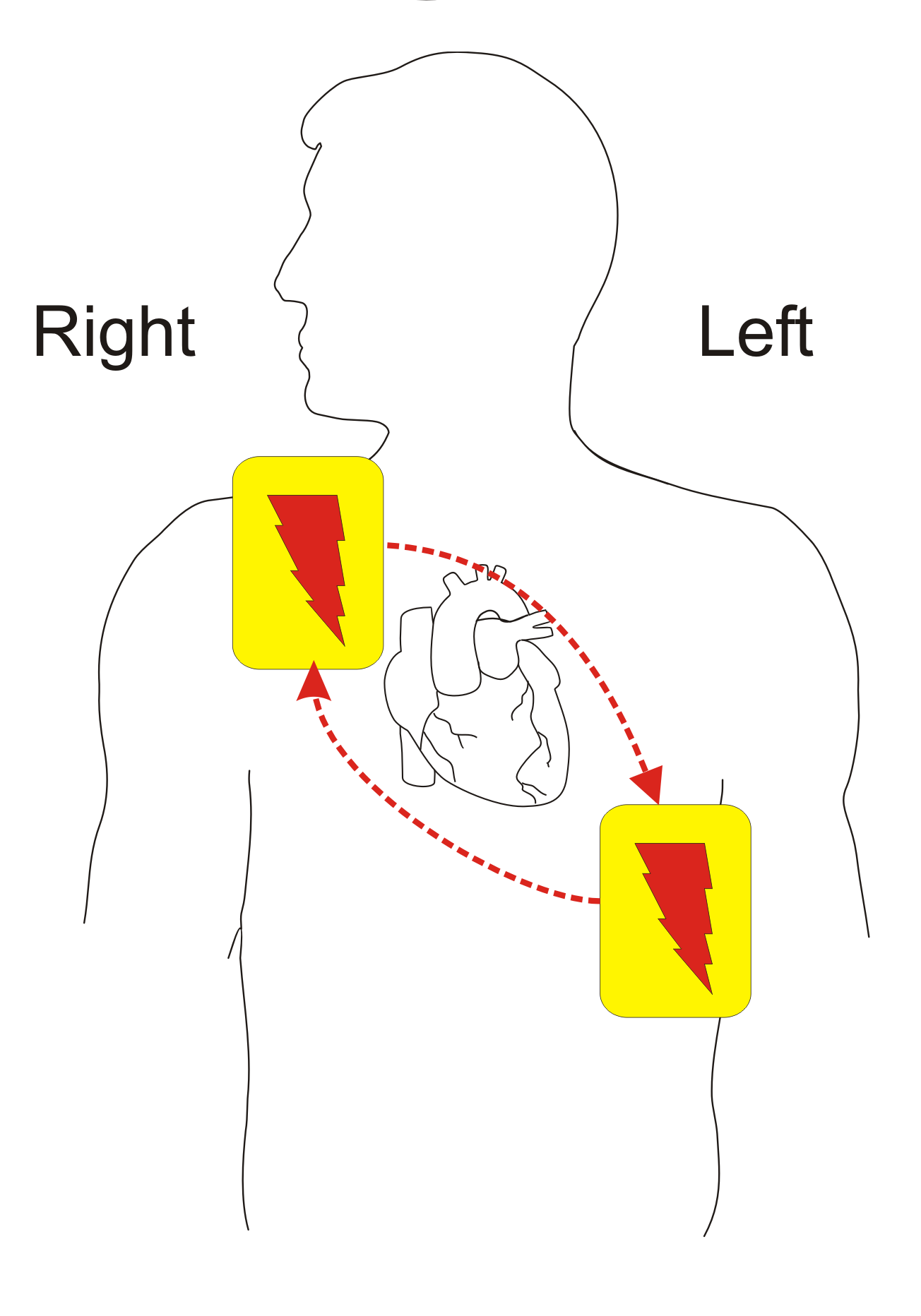Ventricular Tachycardia is a rapid heartbeat that begins at the bottom chambers of the heart, named Ventricles. Ventricles are the main heart's main chambers which pump. Ventricular Tachycardia can be very life-threatening because it can lead to Ventricular Fibrillation.
Ventricular Fibrillation is when the cardiac muscles quiver rather than contract. Ventricular Fibrillation requires immediate medical response. If the patient receives no attention he/she will fall degenerate with no blood circulation. After 4 minutes serious brain damage can occur and after 8 minutes brain damage is likely to be severe and can result in death.
Automated External Defibrillator (AED) Guidelines
When should an AED be used?
CPR is a very important action when saving a patient’s life. However, an AED is crucial towards regaining the natural rhythm of the heartbeat as well as restarting the patient’s heart. After performing CPR and if the patient is still non-responsive an AED should be implemented. If the AED does not bring the patient back to consciousness CPR should be re-administered. It’s crucial to call 911 or any Emergency Medical Service (EMS) before performing CPR or applying an AED.
How to use an AED
Turn on the AED – Usually, there will be an “On” button but in some cases, there might be a lever. Remove all clothing from the patient’s arms, chest, and abdomen—whether male or female. Attach pads to bare skin on the chest. Make sure to use the appropriate system for a child or adult. Place the left pad under the left armpit—to the left of the nipple and right pad under the collarbone on the right side of the chest. Make sure to place the pads at least one inch away from any implanted devices. Next, connect the wiring. Analyze the patient’s heart rhythm. Make sure you DO NOT touch the patient during the defibrillator process. If the AED does not begin analyzing automatically, make sure to press the analyze button. When advised, press the "shock" button.
Clean the patient and area of any debris such as metal, significant amounts of water, etc., before using an AED.
For Infants
Newer AED’s only shock once; however, some models do shock up to 3 times. If the patient is shocked but doesn’t regain a pulse immediately, perform CPR for 2 minutes. If not advised, continue CPR. When available, use pediatric settings or pads when caring for children and infants. If pediatric equipment is not available, rescuers may use AEDs configured for adults. Use the infants front and back for placement of pads if there's risk of pads touching. Make sure to place the pads at least one inch away from any implanted devices or Transdermal medication patches (or remove patch). If the pads are able to touch make sure to place one pad directly on the back of the infant.
Resuscitation (special circumstances)
Drowning: make sure to remove the patient’s wet clothing and replace it with something warm and dry. Make sure to perform rescue breaths if the patient is unconscious. If rescue breaths aren’t accessible, make sure to perform chest compressions.
Trauma: make sure to use the jaw-thrust maneuver when performing the airway task. Make sure to check for any injuries, such as head, spinal and neck, to maintain patient's protection.
Electroshock: make sure to check for safety before attempting any performance on the patient. Verify that the patient isn’t near any electrical currents or fuse boxes. CPR is priority 1 for Cardiac arrest patients. If the patient is unresponsive or pulse-less, perform CPR.
Rescuers should be physically & mentally fit as well as skillfully prepared and readied for emergency responses. Rescuers should be knowledgeable of all equipment necessary for usage, beforehand.






